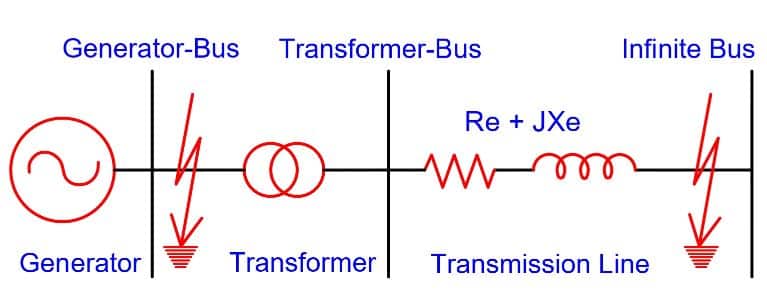Through fault occurs outside of the protective zone. In other words,occurrence of the external faults outside of the equipment protective zone is called through fault.
A transformer has a unit protection or differential relay for protection from the internal fault inside of the transformer. The unit protection relay must not trip in the case of external faults outside of the equipment. The zone, unit or differential relay remains inoperative for all the external faults. All these external faults are through fault.
Now, we take the case of a generator connected to a transmission line. The generator has its own differential protection scheme. The differential protection relay responds to any internal fault in the generator zone. The transmission line has its own distance protection.
Now on occurrence of the fault in the transmission line, the fault current also flows through the generator to the fault point in the line. The generator protection relay should not trip as fault is not in its zone. This fault is known as a through fault for the generator.

In the above fault conditions, differential relay should not trip.
Types of Through Fault
All the faults occurring outside of the differential protection zones are the through faults. The following faults are also the type of through fault.
External short circuit
The short circuit happens when the insulation between two or more conductor gets damage. The heavy fault current flow in the circuit.
Earth Fault
The fault occurs when the live conductor touches to ground in the transmission line. In cables the earth fault or ground fault occurs when the insulation of the cable gets damage an, live conductor touches to ground.
There are mainly three types of ground fault namely line to ground (L-G), line to line (L-L), and double line to ground (LL-G) faults. The line to ground fault (L-G) is the most common fault. And, this fault contributes about 65-70 percent of faults line to ground fault.
Overloading
Overloading condition occurs when the load demands is in the excess of the source delivering capacity.
Read Next :